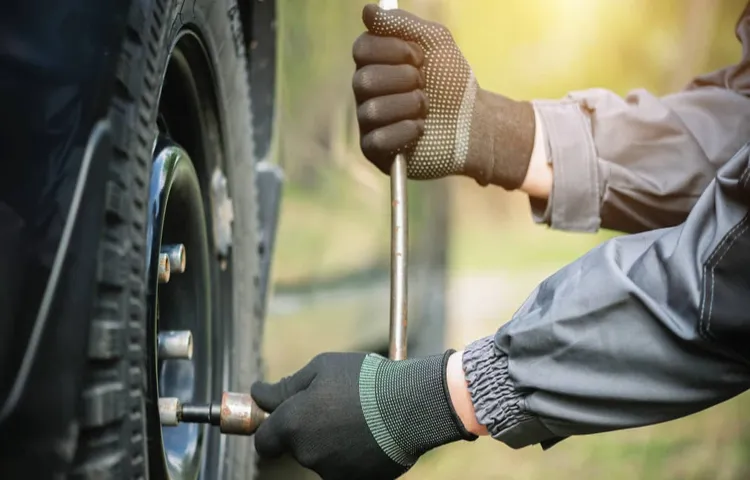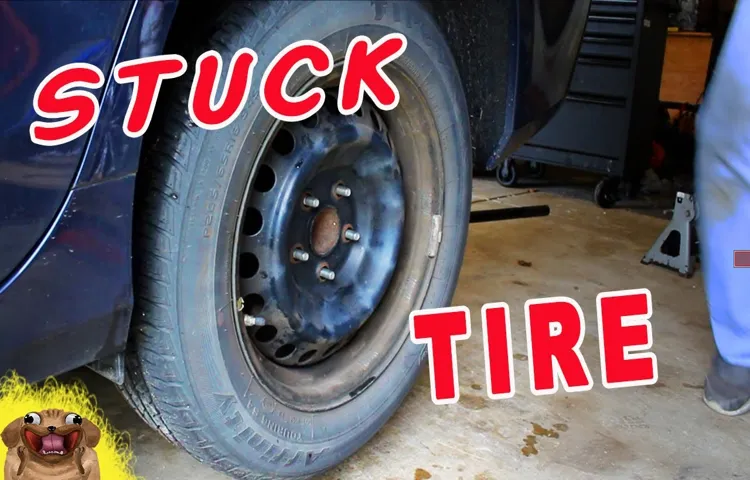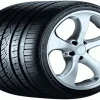Have you ever found yourself in the frustrating situation of having a tire that just won’t budge? Maybe you’re trying to change a flat tire on the side of the road or you’re swapping out your tires for the winter season, but no matter how hard you try, the tire just won’t come off. It’s a common problem that many drivers have faced, but luckily there are some tips and tricks you can use to help remove that stubborn tire. In this blog post, we’ll cover some of the best methods for removing a stuck tire and getting back on the road safely.
From using lubricants to hitting the tire with a rubber mallet, we’ve got you covered so you can handle any stuck tire situation that comes your way. So, let’s dive in and learn how to remove a stuck tire once and for all!
Table of Contents
Assess the Situation
If you find yourself struggling to get a tire off that’s stuck, take a deep breath and assess the situation. First, make sure your car is on a level surface and the emergency brake is engaged. Then, check to see if any lug nuts are rusted or stripped, as this could make it difficult to remove the tire.
If everything looks good, try using a lug wrench or impact wrench to break loose the lug nuts. If the tire still won’t budge, try applying some lubricant, such as WD-40, around the rim and lug nuts to help loosen things up. If all else fails, you may want to consider calling a professional for assistance.
Remember to stay calm and take your time to ensure the job is done safely and correctly.
Inspect the tire
When you encounter a flat tire, the first thing to do is assess the situation. Stop your vehicle as soon as it is safe to do so and turn on your hazard lights. Inspect the tire for any visible damage, such as punctures, cuts, or bulges.
If you notice any of these signs, it’s best to replace the tire instead of attempting a repair. Another crucial aspect to assess is the tire’s condition. Check for sufficient tread depth and look out for bald spots or uneven wear.
These can signify underlying issues with the suspension or alignment. By thoroughly inspecting your tire, you can determine the best course of action and stay safe on the road. Remember, prevention is better than cure, so make it a habit to check your vehicle’s tires regularly.

Check the lug nuts
When it comes to ensuring the safety of your vehicle and those on the road around you, it’s crucial to assess the situation before hitting the pavement. One of the most important things to check before driving is the lug nuts on your tires. These small but mighty components keep your wheels securely attached to your car, and a loose or missing lug nut can lead to disaster.
Take a few moments to inspect all of the lug nuts on each tire, ensuring that they are tightened to the manufacturer’s specifications. Additionally, it’s wise to check for any signs of wear or damage on both the nuts and the bolts themselves. By taking the time to assess the situation and checking your lug nuts, you can avoid potential accidents and enjoy a safer driving experience on the road.
Apply Lubrication
If you’ve ever tried to remove a tire and found that it’s stuck, you know how frustrating it can be. One trick that mechanics use to get a tire off that’s stuck is to apply lubrication. This can make it easier to slide the tire off of the wheel hub.
There are a couple of different types of lubrication that can work well. One is penetrating oil, like WD-40. Spray a generous amount around the tire’s base to let it seep into the crevices and penetrate the surface.
Another option is to use a silicone-based lubricant or a tire bead lubricant, which is designed specifically for this purpose. Just a small amount of either will do the trick. Apply the lubricant, give it a few minutes to work in, and then try to remove the tire.
This should make it easier to dislodge the tire, even if it’s been stuck for a while. Remember to always wear gloves and follow the safety instructions on the lubricant package.
Use a penetrating oil
If you’re having trouble with a stubborn bolt or screw, you may need to apply some lubrication. One effective method is to use a penetrating oil. These oils are specifically designed to seep into tight spaces and break up stubborn rust and grime.
Simply apply the oil to the affected area and wait for it to do its magic. It may take a little time, but eventually, the oil will work its way in and dissolve whatever is causing your bolt or screw to stick. One of the best things about penetrating oils is that they can also help prevent future corrosion and rust, making it easier to remove the same bolt or screw in the future.
So whether you’re working on your car or just doing some DIY projects around the house, keep a can of penetrating oil on hand – it may just save you some frustration down the line.
Tap the tire
When it comes to maintaining your car, regularly checking the tires is an important step towards ensuring a safe and smooth ride. One way to do this is by “tapping the tire” to check for any abnormalities. This involves using a tire iron or a wrench to gently tap the tire in a circular motion.
If there are any issues with the tire, such as a loose lug nut or a flat spot, you will hear a different sound. Another crucial part of tire maintenance is applying lubrication. This can help prevent rust, corrosion, and damage to the tire valves.
Using a high-quality lubricant specifically designed for tires, apply a small amount to the valve stems and fittings. Be sure to wipe off any excess and avoid getting it on the tire treads. Regularly checking and maintaining your tires can not only save you money in the long-run but can also prevent potentially dangerous situations on the road.
Hit the rim with a rubber mallet
If you’re having trouble getting your tires to fit onto your rims, don’t worry, it’s a common problem. One solution that you may not have considered is using lubrication. Applying a small amount of lubricant, such as dish soap or coconut oil, to the rim can make all the difference in sliding the tire onto the rim.
However, be sure not to use too much as this can cause the tire to slip off the rim once it’s inflated. If the lubrication route doesn’t work, it’s time to get out the rubber mallet. Hit the edges of the rim with the mallet to help stretch it slightly and make it easier to fit the tire onto.
Use a light touch and just enough force to create a small indentation. Then try again to fit the tire onto the rim. Don’t be afraid to repeat this process until the tire fits properly.
Just remember to take your time and not rush the process, as you don’t want to damage the rim or tire. With a little patience and persistence, you’ll have those tires on in no time.
Use a Jack or Pry Bar
If your tire is stuck, using a jack or pry bar can help you get it off. First, find a solid surface to place the jack or pry bar on. Then, position the jack or pry bar underneath the car in line with the stuck tire.
If using a jack, pump it up until it lifts the car off the ground. If using a pry bar, wedge it between the tire and the hub and use leverage to loosen the tire. Once the tire is loose, you can remove it and replace it with a new one.
Make sure to use caution when using a jack or pry bar and always follow manufacturer instructions to ensure safe use. With these tools and some patience, you can safely and efficiently remove a stuck tire and get back on the road in no time.
Lift the car with a jack
Lifting a car with a jack is essential knowledge for any vehicle owner. The first step is to ensure that the ground beneath the car is level and stable. Then, you will need a jack or pry bar.
Position the jack underneath the designated lifting point on the vehicle, indicated in the owner’s manual. Use the pry bar to loosen the lug nuts on the tire you need to remove. Cranking the jack handle clockwise will lift the car into the air, but be sure not to exceed the weight limit of the jack or the maximum jacking point on the vehicle.
Once the car is lifted, remove the tire and complete the necessary repairs. Remember to always ensure stability and safety when lifting a car with a jack.
Use a pry bar or crowbar to loosen the tire
When changing a tire, a jack is a crucial tool to help elevate the car off the ground. However, sometimes the tire may be stuck and difficult to loosen. In this case, a pry bar or crowbar can come in handy.
First, make sure the vehicle is securely placed on the jack. Then, use the pry bar or crowbar to gently apply pressure between the tire and the wheel hub. This will help loosen any accumulated rust or debris that may be causing the tire to stick.
Remember to use caution when working with a pry bar or crowbar, as excessive force can cause damage to the surrounding areas. Additionally, ensure that the tire is completely loose before attempting to remove it. By using a jack and a pry bar in tandem, changing a stuck tire can be made much simpler and hassle-free.
Call for Assistance if Needed
If you’re struggling to remove a stuck tire, the best thing to do is call for assistance. Sometimes, no matter how hard we try, certain things are beyond our ability to solve on our own. When it comes to removing a stubborn tire, it’s important not to force it.
Doing so could cause damage to the tire or even injury to yourself. Instead, consider reaching out to a professional, such as a tire repair service, for help. They have the experience and tools necessary to safely and efficiently remove the tire, without risking any harm.
Knowing when to ask for assistance can save you a lot of time, money, and frustration in the long run. So, don’t hesitate to make the call!
Conclusion
In conclusion, getting a tire off that’s stuck can be a real pain in the you-know-what. But fear not, my dear friends, for with a little elbow grease, some creative problem-solving, and a dash of stubbornness, that tire will be off in no time. It’s like the old saying goes: if at first, you don’t succeed, try, try again.
..or just call a tow truck.
“
FAQs
1. What are some common reasons why a tire may get stuck? A: Some common reasons include rust on the wheel hub, a bent or warped wheel, or a build-up of debris between the wheel and hub. 2. What are some tools that can help remove a stuck tire? A: A rubber mallet, penetrating oil, a lug wrench, and a jack are all helpful tools in removing a stuck tire. 3. How long does it typically take to remove a stuck tire? A: The amount of time it takes to remove a stuck tire varies depending on the level of rust or debris build-up. It could take anywhere from a few minutes to a few hours. 4. Can I attempt to remove a stuck tire on my own or should I seek the help of a professional? A: It is possible to remove a stuck tire on your own, but if you are unsure of what you are doing, it is always better to seek the help of a professional. 5. Is it safe to use excessive force when removing a tire that is stuck? A: No, using excessive force could damage the wheel or wheel hub and potentially cause injury. It is important to use caution and the proper tools when attempting to remove a stuck tire. 6. Are there any preventative measures I can take to avoid getting a tire stuck? A: Keeping the wheel hub clean and free of debris, regularly inspecting the wheels for any damage or warping, and applying anti-seize lubricant are all preventative measures that can be taken to avoid getting a tire stuck. 7. What should I do if I have exhausted all other options and the tire is still stuck? A: It is important to seek the help of a professional in this situation. They have the necessary tools and expertise to safely remove the stuck tire without causing further damage.



